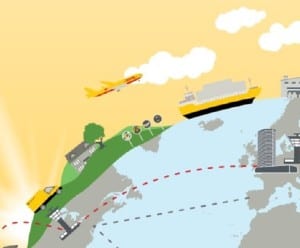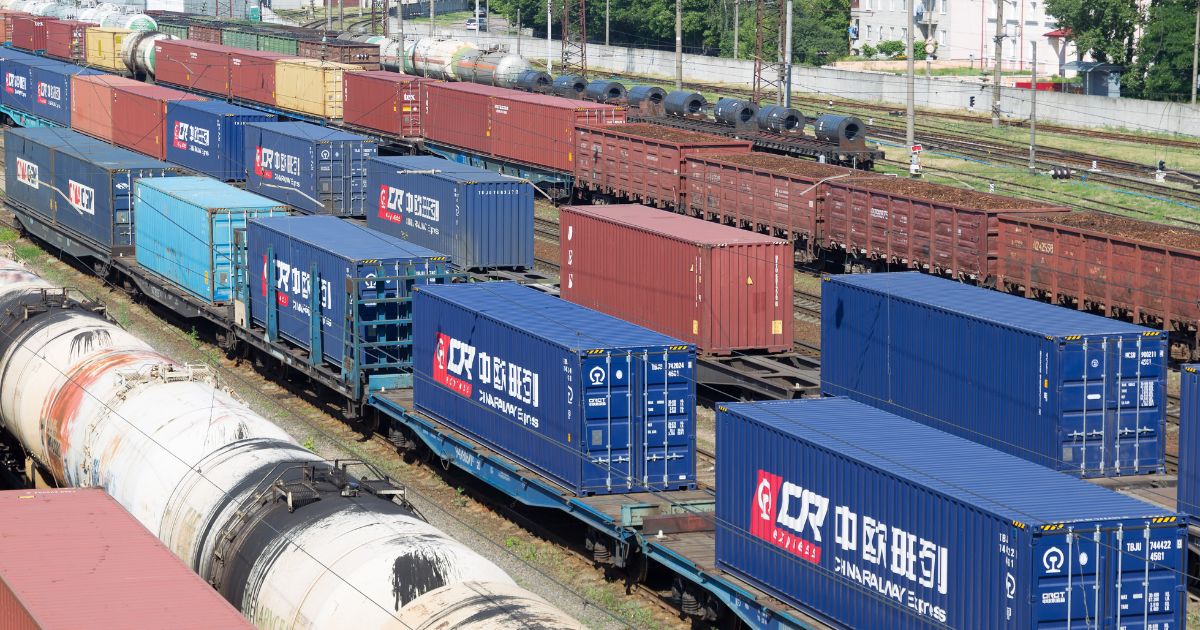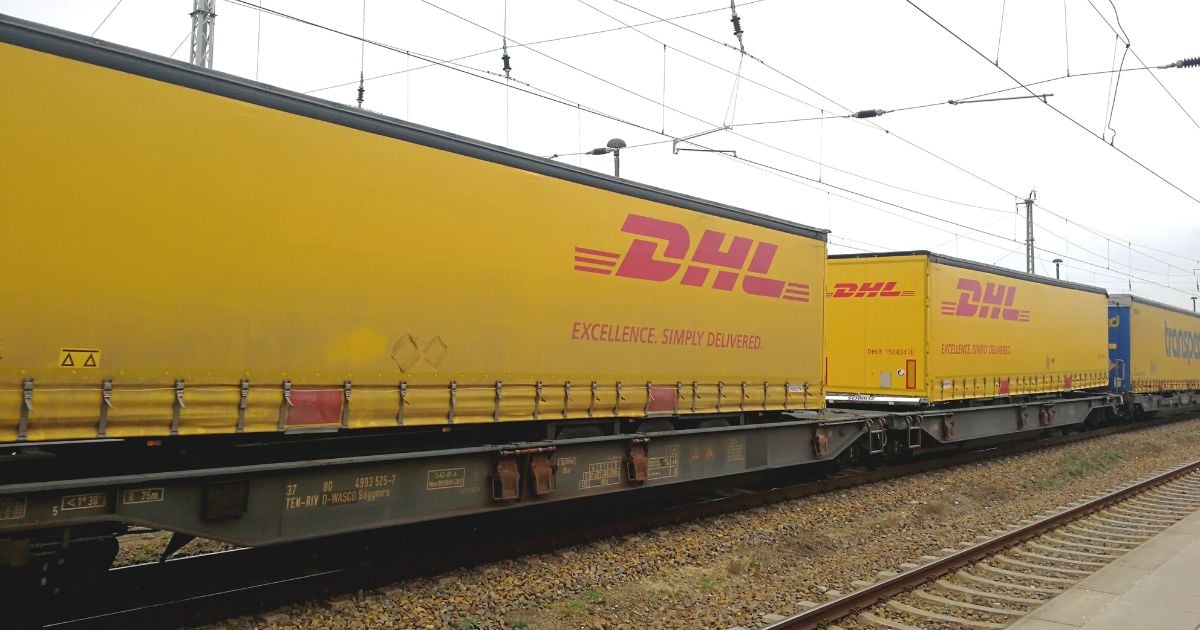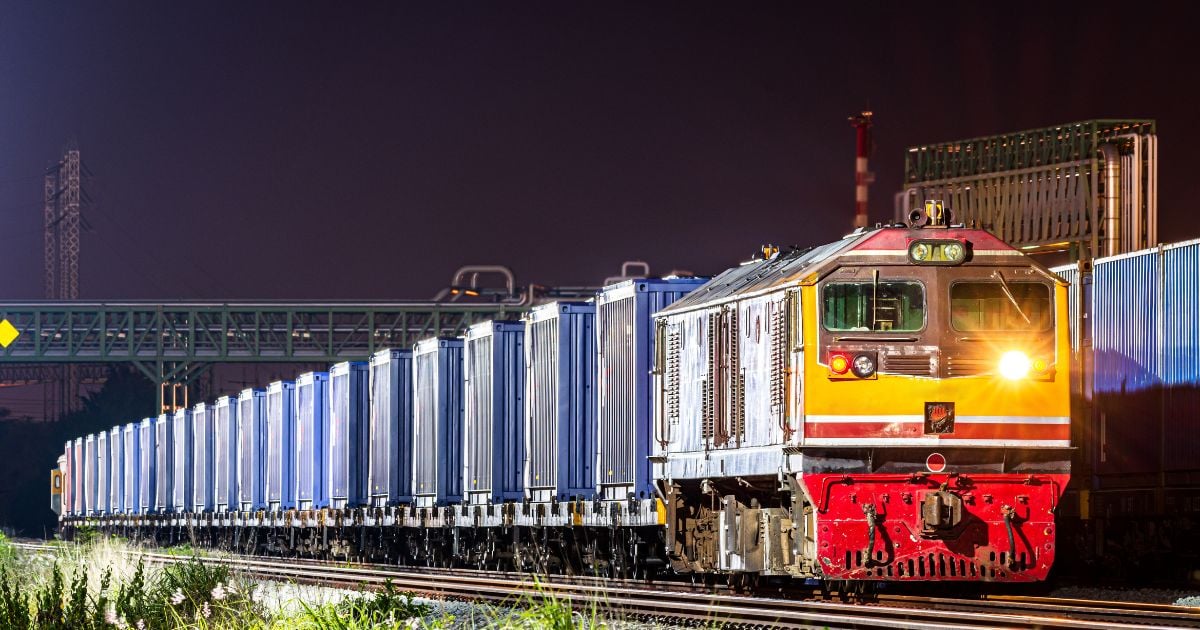
The Resurgence of Rail Freight in Multimodal Logistics

With the pace of today’s economy, speed is always king. Efficiency and competency are making or breaking the seamless flow of goods worldwide.
As the application of multimodal logistics soars in popularity, rail freight is gaining attention for its notable advantages in sustainability, cost-efficiency, and reliability — a vital and timely response to the quick-changing demands of global trade.
Multimodal logistics for the long last mile
Multimodal logistics involves integrating multiple modes of transport, such as rail, road, ocean, and air, to form a network of transport options available throughout the logistics journey. This approach's best practices will tap into each transport mode's strengths to optimize costs and time while minimizing environmental impact.
For example, rail transport might be the most cost-effective long-haul solution, but trucks possess the flexibility needed for last-mile delivery. Multimodal logistics uses both options to optimize the transport journey, ensuring the supply chain is agile and efficient.
Leading logistics providers optimize rail freight by leveraging digital tools such as tracking systems, advanced signaling systems, real-time tracking, and automated processes, on top of predictive analytics. Digital tools enable precise coordination across transport transitions, reducing costs and time taken.
These improve efficiency, on top of strategic partnerships and collaborations with rail operators and port authorities to ensure seamless integration. International multimodal transport operates under diverse regulatory frameworks, such as the UN Convention on International Multimodal Transport, which establishes standard rules for multimodal contracts. Initiatives like the EU’s Combined Transport Directive promote interoperability across member states participating in regional agreements.
With infrastructure investments, the development of multimodal hubs supports efficient rail operations. Companies can achieve significant cost savings without compromising on timeliness. Incorporating rail freight also allows supply chains to emit substantially less carbon dioxide than road or air transport, in line with the logistics sector’s sustainability goals. The development of multimodal logistics parks, as seen in India’s rapid growth, creates centralized hubs for seamless mode transitions.
Rail freight’s comeback era
With rail freight emitting up to 80 percent less carbon dioxide per kilometer-ton than road transport, it is an option that green logistics strategies cannot ignore.
While rail transport is often seen as limiting, rail schedules are less likely to face weather and traffic disruptions than road or marine transport. Existing rail networks are also enhanced to connect key international markets, extending global reach. Flexible routing and mode combinations enable quick responses to changing demand patterns.
Advancements in Internet of Things (IoT) technology have streamlined the flow of operations for rail transport. Initiatives like the Belt and Road Initiative (BRI) have strengthened rail connectivity across continents.
In 2021, DHL Global Forwarding's new rail service between Kunming, China, and Vientiane, Laos, began plying its route along the China-ASEAN trade corridor, transforming Laos from a landlocked to a land-linked hub.
In addition, the rail service is a more cost-effective solution, being up to 50 percent cheaper than air freight.
Furthermore, the economies of scale achieved by using rail transport to move large quantities of goods over long distances in a single trip significantly reduce per-unit costs. These savings trickle down into the industries using such options, translating into savings for consumers as well.
Resilience and flexibility in supply chains
The Covid-19 pandemic underscored rail transport’s role in resilient supply chains. Rail’s ability to operate reliably during global disruptions made it invaluable, ensuring continuity when other modes faced delays. Reducing reliance on a single mode mitigates disruptions caused by mode-specific challenges, such as port congestion or road closures.
The recent explosive growth of China-Europe rail services has significantly impacted global logistics, offering a viable alternative to traditional air and sea freight. This rail network has expanded significantly, now comprising over 30 lines connecting numerous cities across both continents, offering transit times of approximately 15 to 18 days.
In 2020, amidst the disruptions to air and sea freight during the height of the Covid-19 pandemic, businesses sought more reliable and economical alternatives to contemporary modes of transport. The popularity of rail services resurfaced then, providing a middle-ground solution that was more affordable than air freight and more efficient than ocean freight.
Rail freight proved itself as a dependable alternative during times of global crisis, enhancing the flexibility and resilience of global supply chains and diversifying international trade routes.
Japan’s 1st cargo-only bullet train launches in fall
Japan’s first freight-only Shinkansen bullet train is expected to go into service between Tokyo and Morioka this autumn.
Removing all passenger seats from its seven cars and installing apparatus to prevent load shifting, East Japan Railway Co. plans to convert an E3 series Shinkansen. In lieu of higher demand for precision equipment and high-end fresh fish, among other goods, the new service will be able to handle larger goods and dramatically increase transport volume while expediting deliveries with faster and smoother journeys than conventional cargo trains.
The remodeled train will be hooked up to another Shinkansen that carries passengers, and will be the first bullet train dedicated to freight transport since the Tokaido Shinkansen Line started operations in 1964. East Japan Railway also plans to develop a dedicated freight-only Shinkansen that features larger doors for smoother loading and unloading operations.
Chugging through roadblocks ahead for rail freight
The resurgence of rail freight is enhancing trade efficiency, reducing logistical barriers, and enabling businesses to expand their reach. Cost and time savings associated with rail transport enhance global competitiveness, while investments in rail infrastructure stimulate local economies and create jobs, fostering regional development.
Capacity constraints and the need for infrastructure development can pose hurdles to modernization and expansion. Integrating rail networks with existing transport modes demands meticulous planning, while regulatory complexities across borders can slow implementation.
Significant financial investments are required to expand and modernize rail networks to meet increasing demand. Integrating rail systems with other existing transport options requires meticulous planning, while local regulations amidst international border controls may also hinder seamless implementation.
Safety concerns, particularly high-profile derailments highlight the necessity for continuous investment in infrastructure maintenance and risk mitigation. As global supply chains grow more interconnected, ensuring rail freight’s reliability and security remains critical.
In a pioneering step toward advancing sustainable urban logistics, Blue Dart Express Ltd. (BDEL), India’s premier express logistics service provider, has announced its strategic collaboration with Delhi Metro Rail Corporation Ltd. (DMRC) to launch the first Sustainable Green Line Haul in the South Asia Pacific region.
Under this partnership, Blue Dart will utilize Delhi Metro’s extensive infrastructure, including stations, tracks, and kiosks, to create a sustainable urban cargo transport network across the Delhi NCR region. Leveraging DMRC’s existing framework, the collaboration aims to address urban challenges such as traffic congestion and carbon emissions while enhancing last-mile delivery for e-commerce consignments and other cargo.
This initiative introduces a transformative urban freight solution that facilitates seamless cargo movement between key metro stations, starting with the Terminal 3 Airport Line and New Delhi Airport Line. Joint assessments for Micro Parcel Hubs at key metro locations aim to enhance delivery efficiency. This eco-friendly logistics model is designed to reduce road congestion and urban pollution.
As part of its long-term strategy, Blue Dart plans to expand its urban cargo network to additional metro stations, reinforcing its leadership in sustainable logistics solutions. By repurposing metro premises into logistics hubs, the company aims to boost operational efficiency, shorten delivery timelines, and support environmentally responsible urban freight systems.
As industries prioritize greener logistics, ongoing advancements in automation, digitalization, and alternative fuel sources will further enhance rail transport’s efficiency and environmental benefits. As policy harmonizations take place to ease the rail pathways, rail freight can continue chugging toward a more sustainable supply chain for the future, one track at a time.
ALSO WORTH READING














 English
English